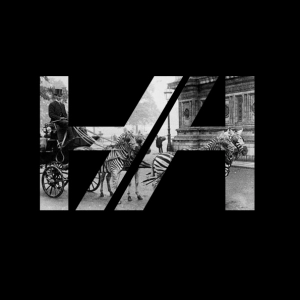Michael Malloy is possibly the only hero to emerge from the prohibition era which plagued the United States between 1920 and 1933. This period witnessed the banning of the manufacturing and sale of alcohol throughout the US. Although against Federal Law, in the teeming cities in the Land of the Free it was relatively easy to still get your fix in one of the many shady, underground speakeasies which dotted the city. These illegal drinking dens were supplied by the ever growing organised crime mobs, which were headed by some of the most notorious names of the 1920s, including the infamous Al Capone.
The alcohol could be lethal. Federal authorities poisoned industrial alcohol which although could be distilled out there was a risk that some of the poison would remain. Distilling wood also became a deadly beverage, as it would often form into high levels of formaldehyde which could cause blindness and eventual death. . These lethal drinks were of particular danger to the workers of the industrial cities due to their low cost and availability. For the middle class and the high society party goers they could afford to either buy smuggled liquor or take a bottle from their own private stores.
Mike Malloy, a former fireman, became a regular visitor to one of New York’s many speakeasies where he would drink from the morning until he passed out. It was there he caught the attention of a local gang who decided he would be an easy target. They would take out life insurance policies against Malloy, encourage him to drink himself to death and then collect the pay-outs. A simple plan.
Firstly, the gang tried to get Malloy to drink himself to death. However they had grossly underestimated the amount Malloy could stand, so after a few weeks of drinking himself silly and singing the same bloody song the gang had to change their tactics. Next came the turn of poison. They laced his drink with car antifreeze causing Malloy to collapse. Thinking they had finally killed him, the gang dragged Malloys limp body to the back of the bar where they waited for him to die. To their surprise, an hour later Malloy was spotted back at the bar ready to quench his thirst. Over the next few days the gang tried stronger drinks of antifreeze, turpentine and horse liniment with rat position, but nothing could stop Malloy.
The gang stepped up their attempt at the demise of Malloy by first serving him raw oysters soaked in wood alcohol, a great killer of the prohibition era. After a further course of rotten sardines mixed with tin shavings Malloy seemed untouched by the concoction of the deadly seafood medley. At this point the gang decided to take their efforts a step further by taking the rather drunken Malloy to Claremont Park, stripped of his coat, poured 5 gallons of water on him before dumping him on a snow bank in the middle of the bitter New York winter. Amazing however, the next evening Malloy walked back into the speakeasy ready for another drink.
It seemed nothing could kill Mike Malloy. In their next attempt the gang paid a cab driver $150 to run Malloy over. In his first attempt the cab driver missed as Malloy had staggered out of the road, but eventual Malloy was hit. The gang returned to the speakeasies waiting for official news of Malloy’s death, however after several weeks recovering in hospital under a different name Malloy returned once again to the bar. By this point, rather understandable the gang were growing impatient and so planned to directly kill Malloy. After a rigged drinking competition two of the gang dragged Malloy to a hotel room and attached a gas tube into the wall and then into Malloy’s mouth and left him to die. Unfortunately Malloy did not miraculously survive and return to the bar as he had done in the past but rather passed away and was buried without a wake in a $12 wooden box.
This was however not the end of Mike Malloy. The gang received the life insurance payments but due to loose ends and careless talk they all found themselves in the dock. The four gang members attempted a variety of defences including insanity, shifting blame but finally resided on accusing a former gang member who had died a month after Malloy. All of this was in vain and by 1934 all four had died in the electric chair at Sing Sing Prison which was described as ‘the states toast to old ‘Mike the Durable.’
Sources
Deborah Blum, ‘The Legend of Mike ‘The Durable’ Malloy, History Most Stubborn Murder Victim’, io9, 2012 < http://io9.gizmodo.com/5918834/the-legend-of-mike-the-durable-malloy-historys-most-stubborn-murder-victim>
Karen Abbott, ‘The Man Who Wouldn’t Die’, < http://www.smithsonianmag.com/history/the-man-who-wouldnt-die-89417903/?no-ist>
Daily News, ‘The Durable Mike Malloy’, < http://www.nydailynews.com/news/crime/durable-mike-malloy-article-1.226396>



